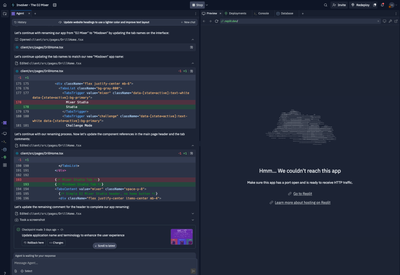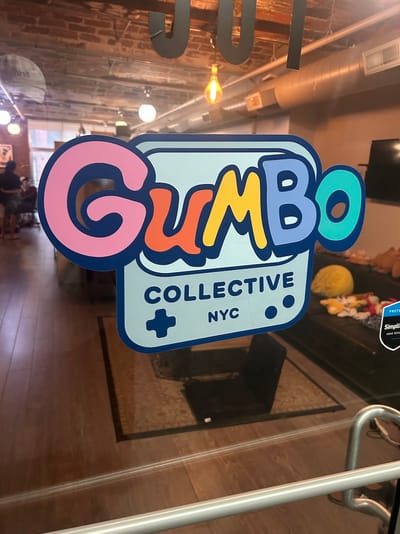5 ways to run better remote workshops
Over the past few years, a new wave of collaboration tools have been a key driver in the growth of remote working.
First championed by software companies and digital nomads, organizations of all shapes and sizes are now exploring, if not fully embracing, what’s possible with remote and distributed teams.
At the time of writing, the Coronavirus outbreak is drastically accelerating this shift in thinking – not just in individual work, but also in gatherings.
This shift in thinking isn’t limited to gatherings of close-knit teams within an organization: it’s making us reconsider company retreats, industry conferences, global festivals, and a whole array of fellowships, accelerator programs, and other community gatherings.
As many gatherings move online – whether by choice or by circumstance, the question of ‘how might we…?’ looms large.
One of the common threads within all these gatherings is the workshop.
After all, the workshop is a place where we can find alignment. It’s where we collaborate with others – where we experiment, fail, improve, succeed, and grow.
As workshops and gatherings continue to move online, we need to think about how to best deliver these experiences.
The good news is many of the key principles of in-person workshop creation also apply to remote sessions. However, there are inevitable differences too.
Here are 5 quick tips on how to run remote workshops – whether your work is in learning, strategy, innovation, or operations.
Keep it simple
There are an incredible array of technology-driven tools available to help us run workshops and other gatherings: from designing prototypes, to delegating project plans; video conferencing, to voting on ideas.
However, it’s so easy to get overwhelmed with all the various tools, plans, features, and integrations.
If you don’t already have a Workshop Stack in place (the subject of the next post in fact!), it’s often best to just pick the simplest set of options and start to use it while being open to changing as you learn.
The simplest workshop stack can be distilled down to just three elements.
You’ll need tools that enable you to:
- Communicate in real-time (e.g. Zoom, Hangouts)
- Share and access content (e.g Google Drive, Dropbox)
- Keep track of time (e.g. an online timer, or for the more analog-minded…a watch)
From there you may want to add tools that allow the ability to:
- Communicate asynchronously (e.g. Slack)
- Manage resources and plans (e.g. Notion)
- Collaborate creatively (e.g. Figma, Mural)
But it’s best to keep it simple first 🙂
Check-in (Check-out)
Finding alignment is key with any group – hence icebreakers. They’re used in lots of workshops, although they should be approached with some caution (see note below). When we’re running an online workshop, icebreakers also often risk getting overly complex or confusing
There are a good amount of icebreakers that are easy to run online, but as a start point a simple and effective way of getting things going is via a check-in: 2 minutes each in pairs with a couple of prompts.
A set of prompts that we’ve been using in our Workshop Creator program is a mirror of workshop success metrics: what have you been learning, and how are you feeling?
Getting people to check in with each other builds trust, alignment, and often surfaces some ideas and questions we can cover during the session itself. You can also use a similar method to close the session – yup, a check-out.
Note: Personally I’m not a big fan of icebreakers – they can feel awkward and also risk undermining trust and credibility. I prefer using these activities later in a workshop once we have a better sense of group dynamics and the general vibe.
Divide by 2
A good rule of thumb is to change whatever you’re doing (lecture, group activity, etc.) every 20-30 minutes. For online sessions, divide this by 2.
Time-boxing down to 10-15 minutes as a maximum keeps things flowing and reduces the chances of attendees getting lost or tuning out.
It’s a little more work as a facilitator (more time management and switching between tools and content) but keeping things in a 10-15 min loop will improve the experience of the session for the group – and that’s what matters.
Space to share
In the Workshop Creator program we spend quite a bit of time working with the Activity Builder tool. Activities look easy on the surface, but they can have 8 or even 12 elements to them depending on the activity in question.
One key component of almost every activity is to allow space for people to share their ideas and insights. Building in sufficient time for this is crucial – especially with larger groups. If in doubt about time, apply the rule of 3: hear from 3 groups to get a good mix of input, before moving on the next part of the session.
(Alas, as a Workshop Creator we have to be a Time Pessimist).
Enjoy the silence (but not too much)
Ok, I had to get a cheap Depeche Mode reference in there. Good facilitators love silence. We can hold tight for minutes at a time, knowing the silence will eventually yield some valuable sharing from our group. Holding the silence takes practice – it feels horribly awkward at first (it’s still something I struggle with).
However, we don’t want to hold the silence too much, especially online. A video call full of silence can feel odd as there’s less context and body language for us to observe and understand.
Three ways to mitigate the silence are:
- Pre-nominate a group member to share on behalf of the group after an activity
- Come prepared with prompts: either by sourcing questions from the group before the session; or opening up a Q&A in your platform for people to post thoughts
- Use a collaboration tool so you can see the work the groups have done – it’s then easy to highlight some talking points
And there we have it – fives ways to run better remote workshops.
We have dozens more tools, resources, and methods available for remote and in-person workshops in our Wavetable Workshop Creator program. Find out more at https://wavetable.net
Note: this article assumes you’re running fully remote rather than a split session with some people in one location and others distributed. Most of these principles also apply to split sessions, but you should pay even more attention to flow and group dynamics. For more on that – check out our other resources.
No spam, no sharing to third party. Only you and me.






Member discussion